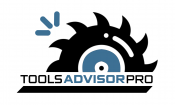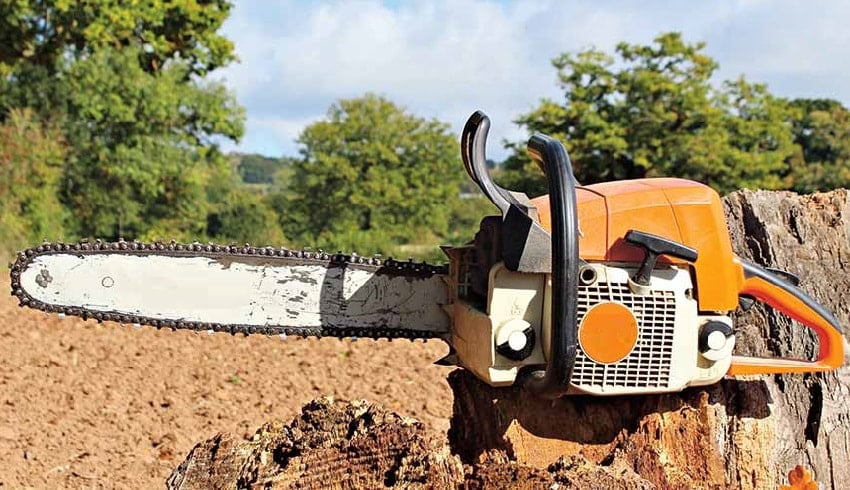The chainsaw bar is one of the most important parts of a chainsaw.
Cutting down huge logs into useable pieces are nowadays only possible because of chainsaws. But whenever we think of a chainsaw, we think of the chain that cuts or the motor that runs this machine.
Our unsung hero, the chainsaw bar has only cared once it gets damaged or wears out.
Some people don’t understand how much the bar has worn out and they simply ignore it. Simply put, they don’t know when to replace a chainsaw bar.
Accidents like chain snap happen because of ignoring bar damage or wearing.
It’s easy to determine bar wearing and damage level. Chain tension test, straight edge test, and bar damage test will tell you when to replace the chainsaw bar.
No worries. We’re here to help you out with the tests.
So, let’s begin with the details-
Bar Wearing Test
There are two tests to determine how much the bar has worn out. If your bar is too much worn out, then you have to replace it.
Test 1: Chain Tension Test
For this, you have to put the chain on your bar. Once, the chain is set, you have to wiggle it sideways.
From this, you’ll get any of the two outcomes.
- The chain moves a bit but not much. This means your bar isn’t worn out.
- The chain moves a lot sideways. This means that you have a worn-out bar.
There’s a reason behind this chain movement. Due to excessive wearing, the chainsaw bar comes to a V shape. New bars are U-shaped. This V-shape allows the chain more space for moving.
So, if your chain moves significantly then you should change it.
Test 2: Straight Edge Test
The previous test is actually a bit vague. Even new bars allow slight chain movement. Also, it’s not clear how much chain movement indicates a totally worn out bar. Most importantly it doesn’t clearly indicate when to replace bars.
So, we’ve got this second test that will help you more accurately.
For this test, you’ll need a scale or a square or something completely straight along with your chainsaw.
Let’s assume that you took a scale. Now, press this scale against the side of your bar and an outside tooth of the chain.
Here you can expect two outcomes.
- There’s a gap between the scale and the bar. This means your bar is okay. There’s been no wearing.
- The scale lays flat against the bar without any gap. This means that your bar has worn out.
This happens because your chain has shifted itself to support the pressure. At this point, you have to change your chainsaw bar.
Don’t forget to check the best professional chainsaw list
Bar Damage Test
Sometimes, even new bars take in damages. So, those problematic bars won’t detectable with bar wearing tests. Through these tests, you can easily find out if your bar has any damages or not.
Bent Bars
Here the goal is to find out if your bar is straight or not. Follow these steps and you’ll easily find out-
- Remove the bar from the saw and wipe out any debris like sawdust.
- Check the surface for something obvious. A bent portion or anything that’s abnormal.
- If you found nothing on the previous step, then hold the bar to your eye level.
- Look down the rail as if you were targeting with a gun.
- If your bar’s bent, then you’ll see some sweeps or bends in the body.
If your bar’s bent, then you can try to straighten it. But to be safe you should replace it.
Cracked up Rails
If your bar’s bent, then there’s a high chance that it’s cracked too. After detecting the bent area, look for cracks in there.
If you don’t find any cracks, then you can try to fix the bent bar. But be cautious. Many have cracked up their bars while fixing bent areas.
If you find cracks, then you can say bye to this bar. Fixing a cracked bar is futile. Go and buy a new one.
Pinched Bar Rails
Look for pinched rails if your bar rail seems straight. Repair immediately if you find any pinches.
The slightest pinches will create ‘hot spots’ in the rail. These hot spots change the bar steel’s temper. This results in permanent damage to the bar.
Now how to fix this?
Follow these steps-
- Mount your chainsaw bar in a vice.
- Tap the bent rail with a punch and hammer
- Use a flat blade screwdriver to pry open the bent bar rails
- Repair the pinch
- Test the repair.
To test the repair, put back the chain into the groove. See if the chain easily slides past the repair. If it doesn’t then you have to take care of the remaining burrs.
Use a small die grinder or thin abrasive disk to clear these out.
Twisted Chainsaw Bars
While finding bends if you find out that one side of the bar is more bent than the other one, then congratulations, you have a twisted bar.
There’s no easy solution to this problem. Repairing twisted bars is too tough. Therefore, twisted bars should be replaced.
Learn With Video When to Replace Chainsaw Bar
Bottom Line
It’s inevitable for a chainsaw to see some tree trauma. But what steps you take after that is important.
In case of any sort of damage or unrepairable wearing, chainsaw bars must be replaced.
Good luck.
Also read:






